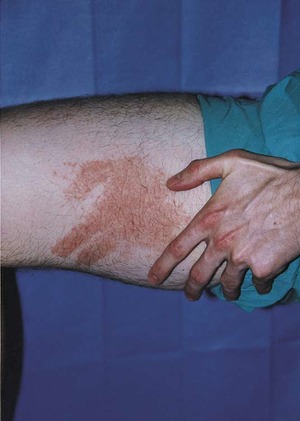Contact dermatitis is an inflammation of the skin and there are 3 main types:
Acute Allergic Contact Dermatitis is a very common itchy, allergic skin condition triggered by direct skin contact to a substance. It is sometimes hard to diagnose because the reactions are delayed by a few days. In fact the medical term for this is Delayed Type Hypersensitivity. The acute type is a red, itchy and bumpy rash which sometimes blisters. There is no fever but the area can feel warm. Poison ivy is an examples of an acute contact dermatitis. A clue that the problem may be allergic contact dermatitis is the location of the rash. If on the earlobes it is almost always due to nickel allergy (usually in costume jewelry). Poison ivy also usually occurs in the area of contact (outer arms or legs, hands) but it can be spread from those areas to clothing and elsewhere which is confusing to doctor and patient. Another tricky aspect of this acute dermatitis is that an allergen can sometimes only affect the most sensitive skin; for example the eyelids can be the only area affected by a facial soap or shampoo. Sometimes it can be quite easy to the shape of the allergic reaction alone makes the diagnosis, as in this image:

This man rested his hand on his leg while eating a peeled mango and a few days later he had this rash in the shape of his hand.
Chronic allergic contact dermatitis is even more of a challenge. It can look like many other types of rashes, including eczema. Again location and shape can be a clue (like a rash on the feet due to sandal straps). Cosmetics, soaps and hair products contain many substances known to cause allergic contact dermatitis.
Irritant Dermatitis is not an allergic reactions at all but is instead due to a chronic irritation of the skin and could come from harsh irritating chemicals, dry/cold conditions and frequent handwashing. Because irritant dermatitis can look just like chronic allergic dermatitis, patch testing is recommended.
Photoallergic contact dermatitis is the least common type and occurs only when the allergen is exposed to sunlight. That requires specialized patch testing.
Diagnosis:
Patch testing (usually on the back) with the standard 80 allergen panel (North American 80) is the gold standard. It starts with taping the panel to the back then examined a couple of days later for readtions. Once the cause of the allergic dermatitis is identified on patch testing patients are given educational sheets about the allergens as well as a list of safe products to use.
